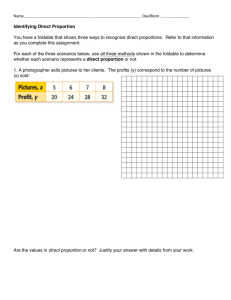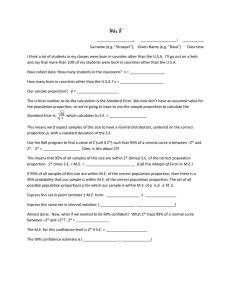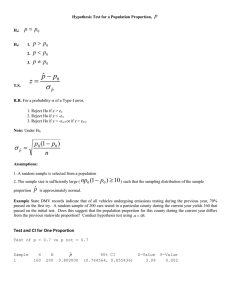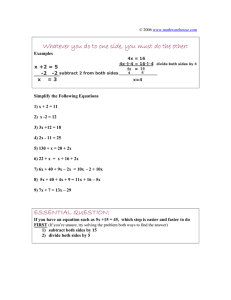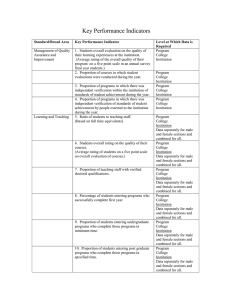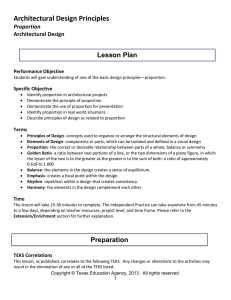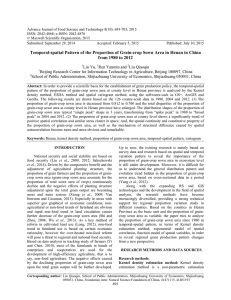Sample Size (Click icon for audio) Dr. Michael R. Hyman, NMSU
advertisement
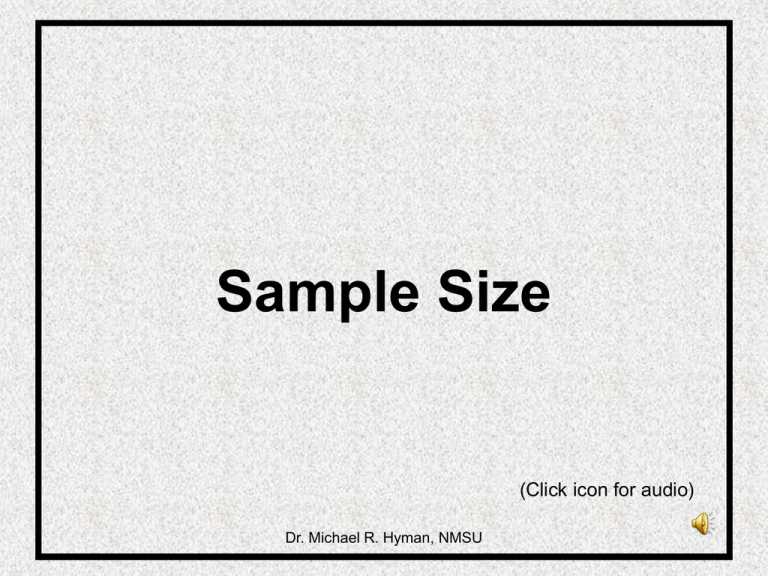
Sample Size (Click icon for audio) Dr. Michael R. Hyman, NMSU Relationship Between Sample Size and Error 2 Determine Size for Probability Sample—Practical Issues • Financial • Statistical • Managerial (how confident needed) 3 Ways to Determine Sample Size • • • • Blind guess Available budget Bayesian considerations Rules of thumb – Main group – Subgroups n > 100 20 < n < 100 • Standards for comparable studies • Statistical precision 4 Typical Sample Sizes 5 Statistical Precision Must know: • Variability of population and individual stratum • Acceptable level of sampling error • Needed level of confidence • Type of distribution (if non-normal) 6 Online Sampling Calculators From DSS Research: • Sample Size http://www.dssresearch.com/toolkit/sscalc/size.asp • Sample Error http://www.dssresearch.com/toolkit/secalc/error.asp 7 Sample Size Formula zs n E 2 where: n = sample size z = confidence interval in standard error units s = standard error of the mean E = acceptable magnitude of error 8 Sample Size Formula: Example #1 Suppose a survey researcher, studying expenditures on lipstick, wishes to have a 95% confident level (Z) and a range of error (E) of less than $2.00. The estimate of the standard deviation is $29.00. 9 Calculation: Example #1 zs n E 2 1.9629.00 2.00 2 2 56.84 2 28 . 42 2.00 808 10 Sample Size Formula: Example #2 Suppose, in the same example as the one before, the range of error (E) is acceptable at $4.00. By how much is sample size is reduced? 11 Calculation: Example #2 zs 1.9629.00 n 4.00 E 2 2 2 56.84 2 14 . 21 4.00 202 12 Calculating Sample Size 99% Confidence ( 2 . 57 )( 29 ) n 2 74.53 2 2 [37.265] 1389 2 2 ( 2 . 57 )( 29 ) n 4 2 74 . 53 4 2 [18.6325] 347 2 13 Sample Size for a Proportion 2 Z pq n E 2 14 Where: z2pq n E2 n = number of items in samples Z2 = square of confidence interval in standard error units p = estimated proportion of success q = (1-p) or estimated the proportion of failures E2 = square of maximum allowance for error between true proportion and sample proportion, or zsp squared. 15 Calculating Sample Size at the 95% Confidence Level p .6 q .4 (1. 96 )2(. 6)(. 4 ) n ( . 035 )2 (3. 8416)(. 24) 001225 . 922 . 001225 753 16 17




